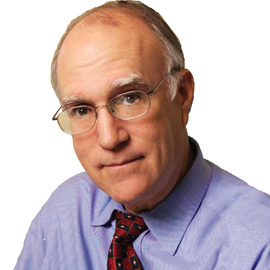I Swear
December 5-11, 2016
More Gilmore
By Vic Fleming
“Gilmore Girls,” a show that ran on the WB, and the CW, from 2000-2007, has been streaming on Netflix since July of this year. I like it. I like the fast-paced dialogue, the pop culture references, and the younger, thinner, less-burdened Lauren Graham. Netflix’s mini-series revival – “Gilmore Girls: A Year in the Life” – kicked off in late November.
Paraphrasing IMDb, as the series starts, 32-year-old Lorelai Gilmore is raising her 16-year-old daughter, Rory, in Stars Hollow, Conn. Their lives are full of nutty neighbors and ups and downs. Mother and child are BFF’s: they go everywhere together, endure many a tribulation, and usually end up ordering pizza.
In the first season of “Gilmore Girls,” Lorelai has a fling with Rory’s English teacher. In “Parenthood” (2010-2015), Graham’s seemingly over-burdened character, Sarah Braverman, thirtysomething divorced mother of 16-year-old Amber, has a fling with Amber’s English teacher. Coincidence? I don’t think so.
Amy Sherman Palladino was inspired to create “Gilmore Girls” by a visit to the town of Washington, Conn., where she stayed at an inn and was struck by the small-town atmosphere that included everyone knowing everyone else, folks helping themselves to coffee at a local diner, etc.
Graham’s costar, Alexis Bledel, was an 18-year-old NYU student when she read for the part of Rory. She was modeling part-time and had been an uncredited extra in “Rushmore” (1998). She had recently applied for a job as a waitress. In the series, Rory’s best friend, Lane Kim, also 16, is played by 27-year-old Keiko Agena.
The show is known for its speedy pace (almost every character talks rapidly). Normally, a page of screenplay equals a minute of screen time. For “Gilmore Girls” scripts, the equation was about half that. Thus, twice as much writing for the writers, twice as many words for the audience, fewer close-ups, and more retakes – so that all the words could be scrunched in intelligibly.
The cast were not briefed ahead of time on pop cultural allusions. Bledel, for instance, was clueless the first time her lines called for a reference to “The Waltons.” That’d be John Boy’s clan, not Sam’s. And, trust me, when we say there are lots of such allusions, we mean lots! And they come rapid-fire. It gets a little old, when you’re binge-watching, but I’d imagine weekly viewers ate it up!
Alex Borstein, of “Mad TV” fame, was the first choice to play Sookie – a role that ultimately went to Melissa McCarthy. Borstein’s husband got the role of Jackson, the vegetable supplier, who becomes Sookie’s boyfriend.
Norman Mailer made a cameo appearance in season 5. The author agreed to do so only because his son, Stephen Mailer, was given a role. Mailer insisted on no scripted lines. “I told them I couldn’t memorize …,” he said.
Carole King, whose “Where You Lead (I Will Follow)” was the theme song, portrayed music store owner Sophie Bloom in three episodes.
Lauren Graham produced 11 episodes, during the show’s final season in 2007.
Jenji Kohan produced 12 episodes in 2000-2001. She went on to produce “Weeds” and “Orange is the New Black,” to say nothing of being edited out of an early-week New York Times crossword a couple years ago.
Watch this series! It is fun!
Vic Fleming is a district court judge in Little Rock, Ark., where he also teaches at the William H. Bowen School of Law. Contact him at vicfleming@att.net.



